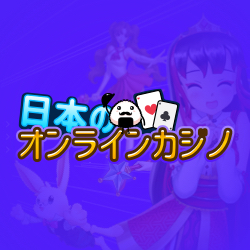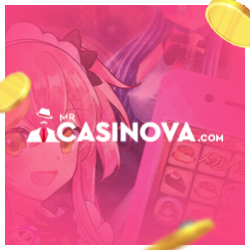Ni No Kuni: Wrath of the White Witch PS3 Review
Publisher: Namco Bandai Developer: Level 5 Genre: RPG Players: 1 Age Rating: 12+
Other console/handheld formats: N/A
Ni No Kuni: Wrath of the White Witch is made by two Japanese giants, Level-5 and Studio Ghibli; two companies that are considered as masters in their respective fields, with Level-5 being an experienced RPG developer behind such greats as Dark Chronicle and Dragon Quest: The Journey of the Cursed King, and Studio Ghibli being a veteran animation studio best known for Spirited Away in these parts.
The yarn is penned by Level-5, though sharing much of the themes that Studio Ghibli are renowned for. With Oliver soon being recognized as the world’s saviour, it’s nothing unique, but is nevertheless a well told story that is rarely anything less than engaging.
The story opens in Motorville, a 50’s esque American town and is centred on Oliver; a 13 year old boy that loses his mother early on in the game. In a bizarre turn of events, his doll Mr Drippy then comes to life and brings hope to him, suggesting that his mother could be resurrected by travelling to another world.
With kingdoms ruled by animals, dangerous monsters inhabiting it, and the presence of magical spells, the other world is much more fantastical than the grounded in reality Motorville, but both are nevertheless closely associated with one another. Every individual in each world has a soul mate in the other, and the state of mind of one can have a bearing on the other and Oliver journeys to the other world to seek out the soul mate of his mother, in the hope that he can resurrect her.
With well written dialogue, a lot of effort has obviously gone into the localization process. Voice acting on the other hand is sparsely used and a bit hit and miss when it is, some characters like Mr Drippy are standout performances, and his welsh accent is novel for a Japanese RPG. It’s also nice to see another game that isn’t just another American dub with the same handful of voice actors.
The musical score meanwhile comes courtesy of the Tokyo Philharmonic Orchestra and regular Studio Gibli contributor Joe Hisaishi, and all involved have produced a wonderfully grand orchestral score for Ni No Kuni that really complements the vast adventure.
Studio Ghibli’s direct involvement in the game lies purely in the remarkable animated visuals that bring so much life and charm to the RPG. It is easily the most beautifully and meticulously crafted cartoon style that has been featured in a videogame up until this point, and it makes the stunningly realised world a delight to journey across.
The addition of a true, sprawling overworld environment also does its part in offering a sense of adventure to Ni No Kuni that has, over the past decade or so, too often been missing from the RPG genre, and when the story permits, being granted vehicles and heading off to previously unreachable areas of the world remains exciting.
In typical genre fashion the world is roaming with all kinds of weird and wonderful creatures to fight; combat is initiated by bumping into them. The combat system is relatively unique in the sense that it’s a marriage between turn-based and more action driven mechanics. You are able to switch between leaders in the heat of battle and will directly control them. Meanwhile abilities once used will enter a cooldown process, before you’re able to make use of them again, and enemy attacks can be interrupted by attacking at the opportune moment.
The combat mechanics are largely functional enough, though could have done with a bit more polish, as your characters will sometimes become blocked by allies when you command them to attack an enemy, which is an annoyance that happens all too often throughout the game. Another issue is the AI of your companions, of which don’t always do what you want them to; refusing to use healing spells when your health drops to dangerously low levels or wasting powerful and expensive magical spells on the weakest of enemies that could easily be dealt with in a physical and far less costly manner for instance.
A strong focus is also on a Pokémon like monster catching element that allows you to tame almost any monster that inhabits the world to make them fight for you as your familiars. Each party member is able to have up to three familiars equipped at a time, granting you dense and diverse options for assembling your party.
Familiars share their masters HP and MP; though possess their own equipment and level up independently, picking up new abilities along the way. Outside of battle, familiars can be given treats to further increase their stats, and it’s up to you on what areas you choose to improve, be it improving weaknesses or further enhancing strengths. Giving a familiar so many treats will see its affinity increase with its master, making them more effective.
Through experience, you’re also able to evolve familiars, which resets their level to one, though as they once again rise in levels, they’ll be stronger than in their previous forms and will be able to learn a handful of new abilities.
The game is a huge one with potentially over sixty hours of gameplay on offer for those that want to explore the numerous optional things that the game has to offer. There’s broken hearts to mend; done so by taking the diminished property from those that have more than their fair share and then restoring the stricken’s heart with it, a bit too of a simplistic process to be truly fulfilling, but nevertheless worth it for the ensuing rewards. There are also, amongst other things, bounty hunts to undertake, tasking you with taking down more powerful creatures and there’s an alchemy system, which some are sure to lose hours to.
Pleasingly, there aren’t many missable sidequests throughout and they never disappear, so you’re able to decide if and when you do them, without ever having to worry that at certain points you’ll lose access to them. The omission of a new game plus is unfortunate, though a wealth of fresh content becomes accessible once the final boss is vanquished.
Completion of most side quests, will see you not only receive new equipment and monetary rewards, but also stamps. You’re able to spend the stamps on various beneficial enhancements; reducing the required MP for magic and abilities or making enemies drop rare items more often for instance.
Ni No Kuni: Wrath of the White Witch has too much in the way of problems to be one of the classics of the genre, though with its outstanding art direction, voluminous lifespan and absorbing mechanics, it narrowly misses out on being such, and also has the advantage of possessing some of the magic that has been lacking in many of the more contemporary Japanese RPG’s.
8/10









